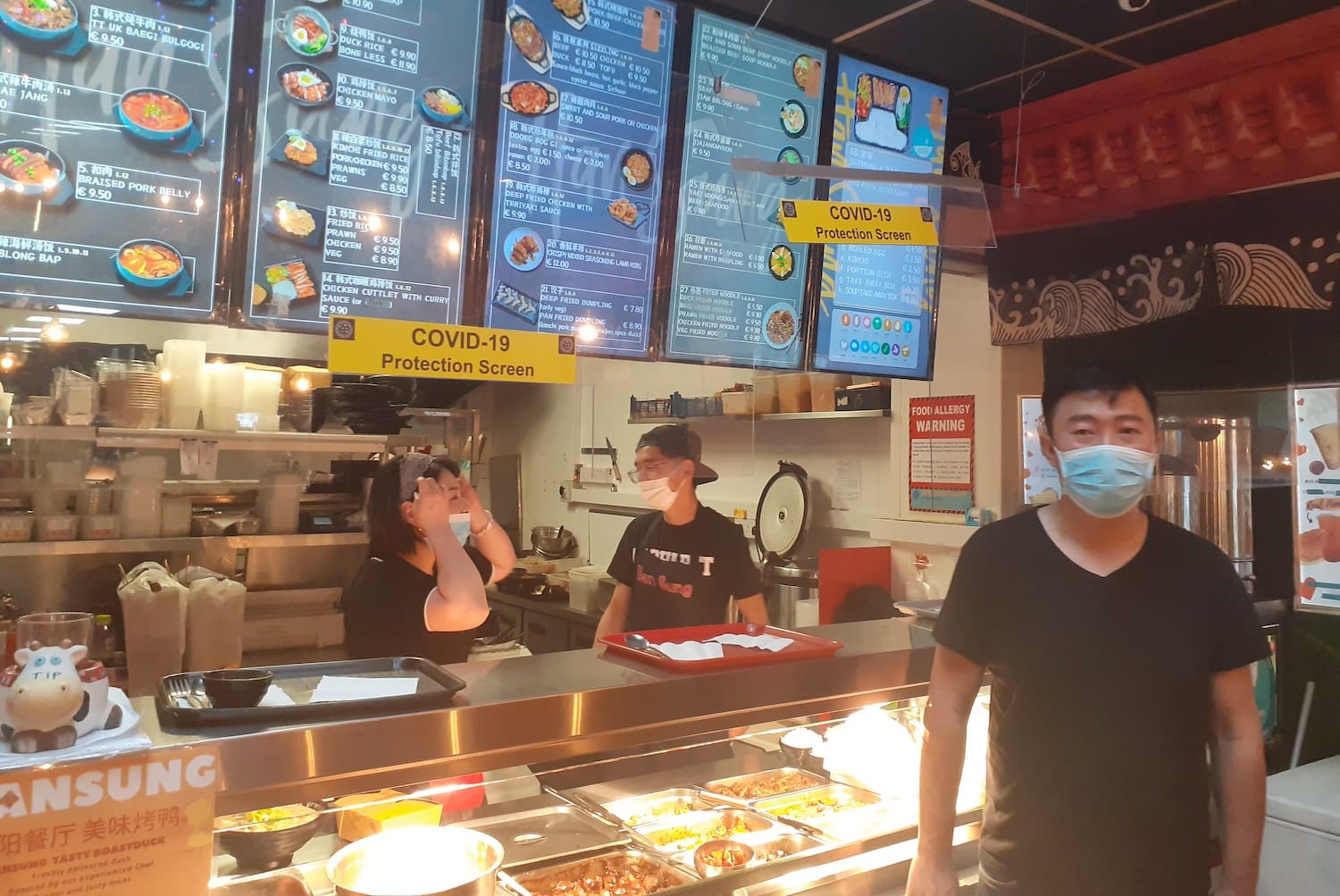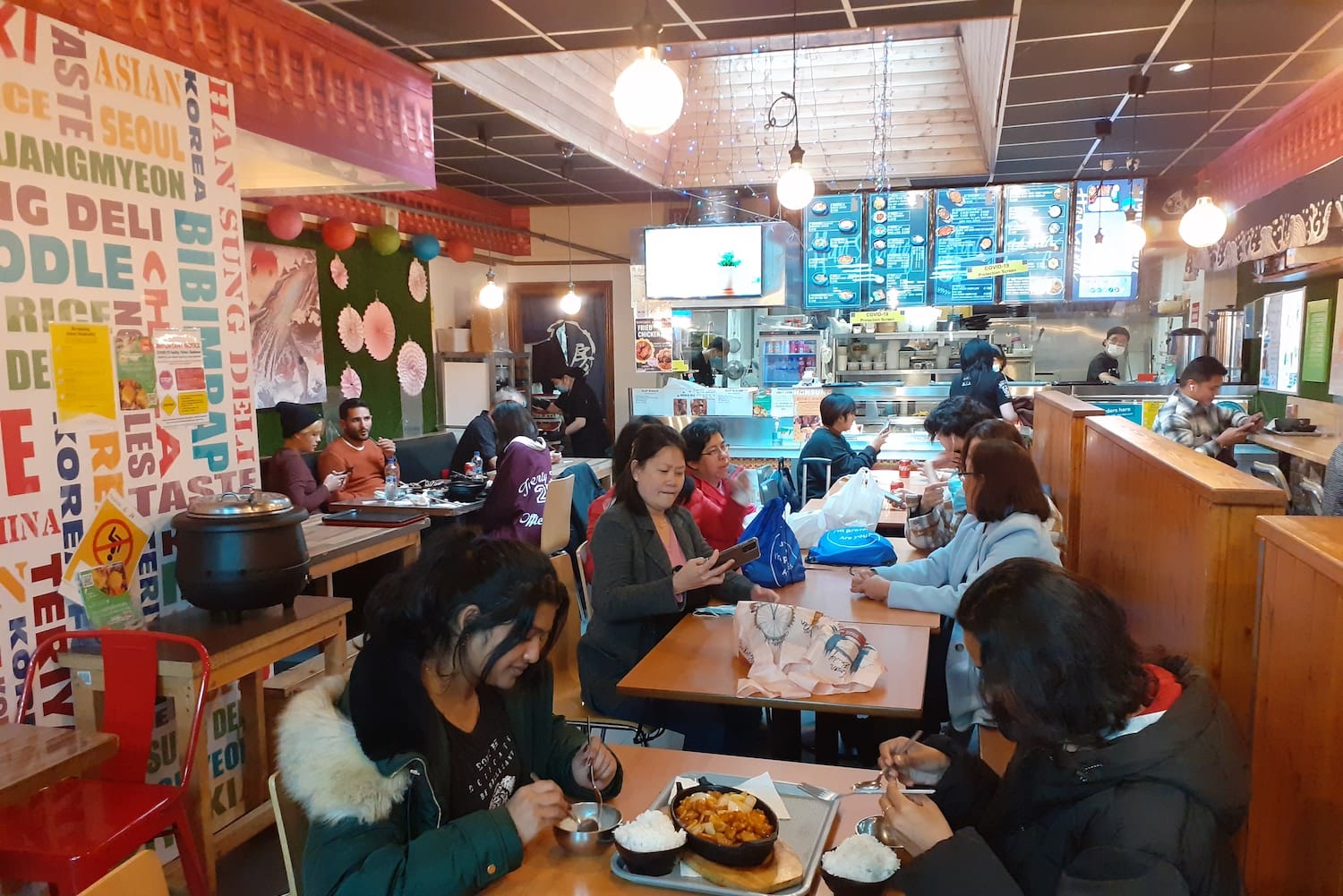What’s the best way to tell area residents about plans for a new asylum shelter nearby?
The government should tell communities directly about plans for new asylum shelters, some activists and politicians say.
At Han Sung Korean Restaurant in the north inner-city, chef Kejia Zhang is experimenting with spicy cheesy rice, chicken mayo, and noodles bolognese.

Before he went to sleep one Wednesday night, Kejia Zhang turned to his wife and told her that he had a new idea for a dish.
“Bolognese,” he said, he announced. “But I will use a different sauce and a different noodle.”
On a recent Tuesday in the kitchen of Han Sung Korean Restaurant in the north inner-city, Kejia said he was gearing up to give it a try.
Like his other dishes, he planned to search widely for inspiration, meshing together ways of cooking and ingredients that he might use in traditional Korean dishes with those in traditional dishes in, say, Italy or France.
“With bolognese, the base sauce is a tomato sauce. But I will use Korean chili paste – looks similar colour, but totally different taste,” he says. He won’t use spaghetti either. “I will use fresh cut noodles.”
He’s keen on the combination of fresh cut noodles, chili paste, and rice powder. “It will be a little bit more sticky in your mouth. That will be different,” he says.
The changing of the seasons has got his mind racing on new ideas. “Now it’s getting cold, I try to make a new dish to really warm up the people.”
But other things inspire his cooking too. “I just want to find out some new things,” he says.
Kejia’s menu has evolved based on what he understands people born in different places to be used to eating.
“We build our menu, and it’s different from the other restaurants,” he says, thoughtfully.
He sees traditional Irish cuisine as heavy on cheese, butter and creamy, he says. And with that, “then I just make some new dish. For example, chicken mayo”.
Chicken mayo is a deep-fried chicken fillet on fried rice, with garlic mayo, traditional Korean chili paste, and a fried egg. “For me, that is nice. And when we just leave this dish on the menu, here, it’s the top one.”
It’s not something you find as a traditional dish anywhere, he says, but you will in Han Sung.
The menu is something in the middle, he says. “It’s like a bridge.”
Kejia Zhang is from the Liaoning Province in China, which borders North Korea, so there are quite a few Korean speakers, and there’s lots of Korean food.
There, he learned to cook a broad range of foods carried from around the world. When he moved to Ireland, he wanted to do a cooking course, but it was too expensive.
Instead, he got a job working in Bleu, a French restaurant that used to be on Dawson Street.
“If I go into the school, I will be learning something really good. But if I go into the restaurant, I will be getting experience,” he says.

He moved around restaurants, he says, just learning. “I really like this, I change another job, I really learned a lot.”
Eleven years ago, he opened Han Sung to invent dishes, drawing on all his experiences. When he thinks he’s perfected a new one, he’ll ask the kitchen staff to try.
Then, after a few adjustments, he’ll bring a small portion out to some loyal customers. “Until everybody says, that’s perfect,” he says.
“I like to build the flavour and taste. And traditional is nice, but I think improving makes a nice dish,” he says.
Server Xu Zhang brings a tray with another example of this approach. There’s a bowl filled to the brim with a bubbling cheese over rice, and a second bowl with a red stew – kimchi jjigae.
This is a very traditional food in Korea, says Kejia. “Maybe for here it’s like, fish and chips,” he says. It’s “for someone who is hungover. When they drink the kimchi jjigae, it can be making them wake up.”
Xu demonstrates how to eat the non-traditional, Korean-Irish-Han-Sung version of the dish.
“This is how it’s typically eaten,” she says. She lifts a spoon and scoops out a sample of rice, then slowly dips it into the bowl of kimchi jjigae. The cheese stretches between the bowls. Out comes a spoon of rice soaking in a red liquid.
The jjigae is a pleasant orange shade, with a hint of creamy thickness when mixed. In the centre, several pieces of soft tofu, and within the stew, the typical crunchy onion and cabbage.
It is spicy – a spiciness that flitters around the tongue for a while, before landing gently at the base of the throat.
Kejia says the cheese is there to combat that. “Maybe the people feeling very spicy, but okay, we can put the cheese. Let the cheese flavour melt, melt the chili or spicy.”
Another cheesy rice dish, is a Han Sung version of a dish called an omurice – basically, an omelette served on a bed of rice.
It was hard for the kitchen to keep up with how many people ordered the traditional version. “It does really take a long time,” says Kejia. “I think, we have to do something different.”
So he tapped into what he has seen in kitchens here. “Fried rice on the base and the cheese – I put mozzarella and cheddar cheese and melt it on the top.”
The diner mixes the cheese into the rice, and combines with the Korean chili sauce, he says. “That’s a very full flavour.”
A hubbub of chatter rises to the ceiling, but calming Korean music can still be heard. Over the other side of the counter, there’s a focused atmosphere in the kitchen, still in its stride after a busy Thursday lunch.
Staff members take late lunches at a side table. A line of schoolgirls trek in, dropping coins and tucking themselves comfortably into a long table, before heading up in twos to order.
When she hears her number called, Varsha Vincent trots up to the counter and returns with a tray of rice bowls and a steaming bowl of peachy-red curry.

Fellow student Neha Benny is waiting excitedly at the table. “We got our usual, sweet and sour chicken,” she says, her eyes on the curry.
The pair have been to Han Sung countless times. “It’s very good, it’s very homely,” says Benny. “They make you feel welcome.”
Vincent likes that staff will pop over to check in while you wait for your food.
Next to them, a family bunches up to take a photo together before leaving.
Benny spoons their shared curry into her rice dish. “We always come here and split meals,” says Benny. “Cus they have huge portions as well. Like, I wouldn’t be able to finish one by myself.”
Other curries are usually a bit too sour, she says. “But this feels like fried chicken with kind of like honey sauce, but it’s also a tiny bit … like, it’s not just sweet …”
“It’s savoury,” adds Vincent. “It’s the perfect mix of both bases.”
“It’s the best thing I ever ate, honest to God,” says Benny. “It’s so tasty, I just get random cravings for it.”
Get our latest headlines in one of them, and recommendations for things to do in Dublin in the other.